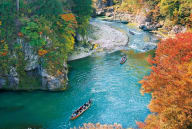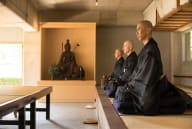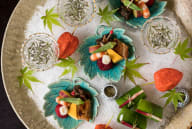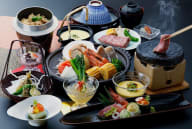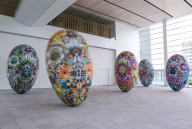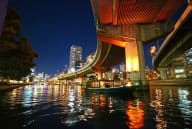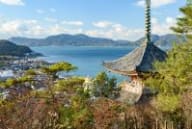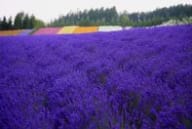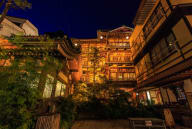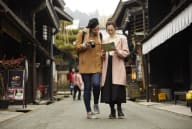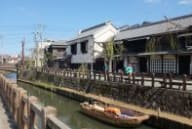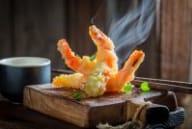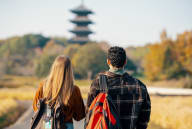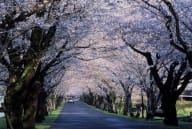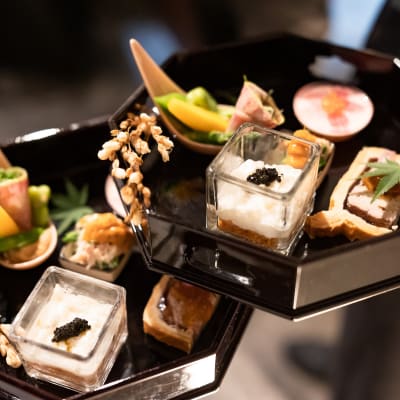Use the
Planning a Trip to Japan?
Share your travel photos with us by hashtagging your images with #visitjapanjp

Dubbed “Japan's Kitchen,” the Kansai region is home to the ancient capitals of Nara and Kyoto. It’s here that much of traditional Japanese culinary culture evolved, including a preference for plant-based dishes inspired by Buddhism. The region also gave rise to the art of kaiseki ryori, a haute cuisine featuring multiple dishes that showcase Kansai’s best vegetables, seafood, and sake.
With its emphasis on fresh, natural ingredients and seasonality, Japanese cuisine has inspired chefs worldwide. The discovery of umami, one of the five basic tastes, has also had a profound global impact. These elements, which have been shared and reinterpreted across cultures, embody the GREEN×EXPO 2027 subtheme of Co-creation.
Experiencing the culinary heritage of Kyoto

Kaiseki cuisine often features kyoyasai, which means “vegetables from the capital.” These heirloom vegetables—like sweet red Kintoki carrots, mild Manganji chilies, and carotene-rich Kujo spring onions—have been cultivated in Kyoto for centuries under strict conditions to ensure their quality. Chefs worldwide prize kyoyasai for their distinctive shapes, vivid colors, and high nutritional value, which in turn inspires new dishes.

To get a deeper connection to Kyoto’s produce and sustainable living, consider a trip to the countryside. At Vegetable Place in Ayabe City, you can harvest organically grown, seasonal kyoyasai like Manganji peppers and black soybeans. For a truly immersive experience, a homestay at Furumaya House, a two-century-old farmhouse, offers visitors a chance to learn how to prepare traditional Japanese dishes, harvest vegetables, and tour a local tea farm.

In Kyoto City, the Isoya restaurant group serves field-to-table cuisine made primarily with organic kyoyasai harvested every morning. While the ingredients are largely the same, each branch of the restaurant follows its own culinary path, offering dishes that are grilled, boiled, pickled, or served with or without meat.
For a direct experience of Kansai’s food culture, particularly the Kyoto style, a visit to the Kyoto Food Culture Museum, Ajiwai-kan, is a must. Here, you can learn how to prepare obanzai (Kyoto home-style cuisine), fillet fish, and make sushi in one of eight cooking galleys. You can also sample traditional stocks made from seaweed and bonito shavings and take home obanzai recipes. This hands-on approach helps spread knowledge and inspire culinary cocreation.
The treasured food traditions of Nara
Nara, Japan’s first true capital, has a rich culinary history deeply influenced by Buddhist principles that included an aversion to meat. This gave rise to a unique food culture focused on both fresh and preserved produce. Many of Nara’s traditionally grown vegetables, known as yamato yasai, are heirloom varieties, including mild purple peppers, vibrant red turnips, and distinctive greens like yamato mana.

A key part of Nara’s food tradition is its preserved foods, especially narazuke. These are vegetables like cucumbers, eggplants, and ginger pickled in sake lees. This process not only creates a delicious product but also offers probiotic health benefits. The Inada Sake Brewery offers a tasting tour where you can learn how narazuke is made, showcasing a valuable lesson in sustainability by repurposing sake lees that would otherwise be discarded—a perfect example of the Expo’s Co-creation theme.
For a true taste of this heritage, visit Awa Naramachi, a restaurant located in a beautiful 140-year-old townhouse. Here, you can explore Nara’s food culture through traditional vegetables, local sake, and even Yamato beef. One of their courses even features dishes recreated from the Nara Period (710–794), offering a direct link to the past.
Nara’s chefs are dedicated to preserving and sharing their culinary traditions. They prioritize sustainability and minimizing environmental impact just as much as the quality of their food. Many embrace a direct farm-to-table approach, maintaining their own farms to ensure the freshest ingredients for their dishes.
Osaka: Japan’s wide-open experimental kitchen

Osaka’s food culture is best summed up by one word: kuidaore, which means “to eat until you go bankrupt.” While other cities in the Kansai region are known for their refined cuisine, Osaka embraces a love for hearty comfort food. It’s a city teeming with restaurants and street vendors, and its culinary tradition has deep roots. During the Edo period, kombu dashi—a kelp-based soup stock—first became popular here. This savory essence is the foundation of umami and is a staple in Japanese cuisine.

For a taste of Osaka’s rich culinary heritage and local culture, visit Kuromon Market. This bustling market has been a microcosm of the city’s food scene for over 170 years. You can find everything from kombu dashi to classic street eats like takoyaki (deep-fried octopus balls) and kushi-katsu (deep-fried skewers of meat, seafood, and vegetables). The market is also a great place to try fresh sushi, grilled scallops, udon noodles, and more.
Osaka isn’t just about tradition; it’s also a hub for food innovation. The city is the birthplace of conveyor belt sushi, which was invented here in the late 1950s. Today, innovators are creating new food technologies, from cultured meat made with wagyu beef cells to other advancements highlighted at the Expo 2025 Osaka, Kansai, Japan. One such technology is a method to freeze-dry and pulverize surplus food—like rice, vegetables, and proteins—for later use. This not only helps reduce waste but also works towards a more sustainable food supply.
Sacred cuisine in the mountains of Wakayama

Although other areas in Kansai such as Nara and Kyoto are known for shojin ryori—Buddhist vegetarian cuisine—many look to Koyasan in Wakayama Prefecture for the ultimate experience. This secluded monastic community in Wakayama Prefecture is a key spiritual center for Shingon Buddhism, offering the perfect atmosphere and centuries of expertise for a truly authentic dining and lodging experience.
Shojin ryori is an artful collection of small dishes featuring colorful seasonal vegetables, fruits, and mountain plants. Each dish is prepared to reflect the Buddhist principles of nonviolence and wellness. The flavors are subtle and natural, with minimal seasoning that allows each ingredient to shine. The cuisine expertly balances all five tastes: sweet, sour, salty, bitter, and umami.

Staying at a Koyasan temple, such as Eko-in, is a chance to fully immerse yourself in this peaceful lifestyle. You can participate in meditation and prayer, and the experience includes exquisite meals. Eko-in offers a breakfast and dinner served in your room, and lunch is available in a quiet dining area within the temple. They also offer gluten-free meal options to accommodate modern dietary needs.
Key takeaways
More than just a source of incredible cuisine, the Kansai region shares its deep-rooted respect for food with the world. The region provides healthy ingredients and new ways to prepare them, all while reinforcing the cultural importance of honoring what we grow and what we eat. The cross-industry collaboration that nurtures these foods reflects the GREEN×EXPO 2027 subtheme of Co-creation.


©Expo 2027

















